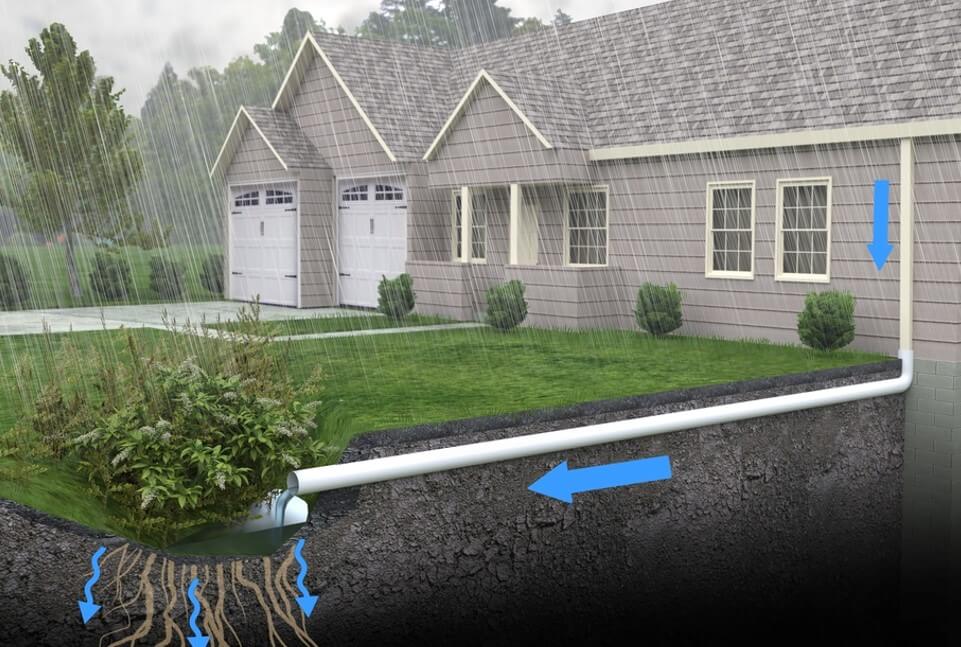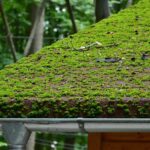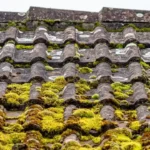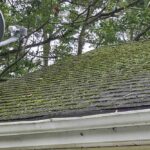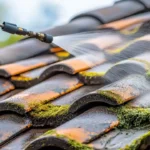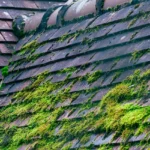Homeowners with steep roofs often face unique challenges when it comes to managing water runoff. Effective roof drainage solutions are essential for protecting your home from water damage. In this article, we will explore various methods to ensure proper water management for steep roofs, enhancing the longevity and safety of your home.

Understanding the Importance of Roof Drainage
Water management is crucial for maintaining the structural integrity of your home. Without proper roof drainage solutions, water can accumulate, leading to leaks, mold growth, and even structural damage. For steep roofs, the urgency for efficient drainage is even greater due to the rapid flow of water.
Challenges of Steep Roofs
Steep roofs offer several advantages, such as better natural water runoff and less debris accumulation. However, they also present unique challenges, including:
- Increased water velocity: Water flows faster on steep surfaces, requiring robust drainage systems.
- Erosion risks: Fast-moving water can erode roofing materials and landscaping.
- Complex installation: Installing drainage systems on steep roofs can be more complicated and costly.
Types of Roof Drainage Solutions
Gutter Systems
Gutters are essential for capturing rainwater and directing it away from your home’s foundation. For steep roofs, consider the following:
- Seamless Gutters: These reduce leaks and require less maintenance.
- Oversized Gutters: Larger gutters can handle increased water flow.
- Gutter Guards: Protect against debris accumulation and reduce maintenance needs.
Downspouts and Extensions
Downspouts are critical in directing water from gutters to the ground. To enhance efficiency:
- Use downspout extensions to direct water further from the foundation.
- Consider splash blocks at the base to prevent erosion.
- Regularly inspect and clean to ensure optimal performance.
Roof Valleys and Diverters
Roof valleys are natural channels for water flow, but they need careful attention:
- Install valley flashings to prevent water seepage.
- Use roof diverters to redirect water flow away from sensitive areas.
- Regular inspections can help identify and rectify potential issues early.
Scuppers and Roof Drains
For flat sections of steep roofs, scuppers and roof drains are viable solutions:
- Scuppers: Openings cut into the roof edge to allow water to drain.
- Roof Drains: Installed in flat areas to collect and redirect water.
- Ensure they remain clear of debris for effective operation.
Maintenance and Inspection
Regular maintenance is key to ensuring your roof drainage solutions continue to function effectively:
- Inspect gutters and downspouts regularly for clogs and damage.
- Check roof flashings and valleys for signs of wear.
- Schedule professional inspections annually to catch potential issues early.
Preventing Common Issues
Understanding common drainage problems can help in prevention:
- Clogged Gutters: Regular cleaning and gutter guards can mitigate this.
- Ice Dams: Ensure proper insulation and ventilation to prevent ice buildup.
- Leaking Valleys: Regular inspection and maintenance of flashings can prevent leaks.
Additional Considerations
Environmental Impact
Consider the environmental impact of your drainage solutions:
- Use rain barrels to collect water for gardening.
- Implement permeable landscaping to absorb runoff naturally.
- Consult with professionals to design eco-friendly solutions.
Professional Installation and Advice
Consulting with professionals can ensure your drainage system is designed and installed correctly. They can offer guidance tailored to your specific roof type and local weather conditions.
Frequently Asked Questions
What is the best gutter type for steep roofs?
Seamless and oversized gutters are ideal for steep roofs due to their capacity to handle large volumes of water and reduced maintenance needs.
How often should I clean my gutters?
It’s recommended to clean your gutters at least twice a year, in spring and fall, to prevent clogs and ensure efficient water flow.
Can I install a drainage system myself?
While DIY installation is possible, hiring professionals ensures correct installation and long-term effectiveness, especially for complex roof structures.

Conclusion
Implementing effective roof drainage solutions for steep roofs is essential for protecting your home from water damage. By understanding and addressing the unique challenges of steep roofs, you can ensure a safe, dry, and welcoming home environment. Regular maintenance and professional advice can further enhance the efficacy and longevity of your drainage system.
For more information on maintaining your roof drainage system, check out our roof drainage tips page.
This article contains affiliate links. We may earn a commission at no extra cost to you.



